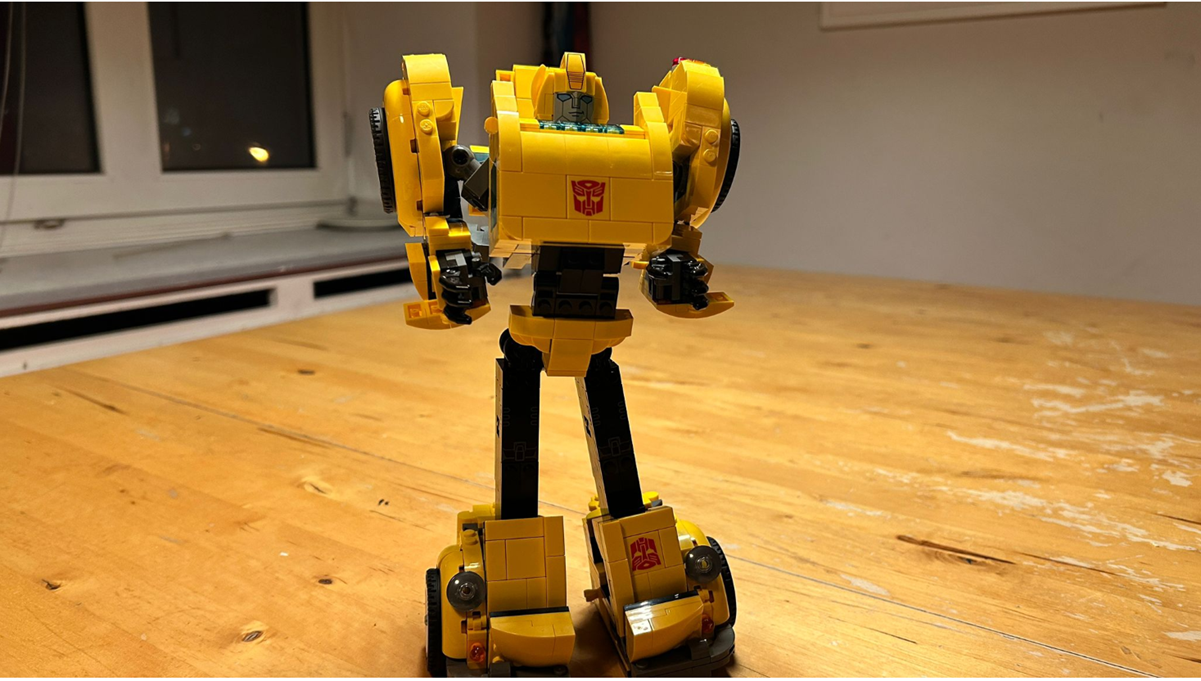Transform the way we think about Copilot

Bumblebee has been one of my favorite characters since REDACTED - this’d be too age revealing :-) Also, I LOVE building LEGO. There’s something magical about building a model that can seamlessly shift between a car and a robot. To me, this feels both playful and purposeful. The beauty of Bumblebee’s transformation is that it’s intentional and fluid, it adapts to the situation at hand rather than forcing a function where it doesn’t fit.
Much like how Bumblebee transforms based on necessity, we need to transform the way we approach AI projects. Instead of trying to find use cases to justify buying Microsoft 365 Copilot licenses (or really any AI powered app/solution/platform), we should be asking different questions:
Where are our biggest bottlenecks? Where do we waste time, money, or lose customers?
Only after identifying these pain points we should explore how to solve them, whether through automation, process improvements, or AI (and maybe Copilot). The real transformation comes from addressing fundamental inefficiencies, not just adopting technology for the sake of it.
Industry giants like Microsoft promote AI-driven products such as Copilot and Azure OpenAI and their compelling narratives and promises of enhanced efficiency and innovation (or should I say they just don’t stop talking about how everything is awesome with AI?) can entice organizations to prematurely incorporate these solutions.
However, this approach often leads to a scenario where businesses are retrofitting their operations to accommodate technology, rather than leveraging technology to address their unique challenges.
Read this again. Businesses try to proactively find use cases for AI, instead of exploring, evaluating, and addressing their pain points with appropriate tech (maybe AI).
To truly benefit of the transformative (🐝) potential of AI, organizations must pivot from a solution-first mindset to a problem-centric evaluation. That sounds counterintuitive as we all believe that we need to focus on solutions, not on problems. So let me guide you through how I approach this with my customers:
- Take a step back and look at where things are getting stuck. Are employees spending too much time on repetitive tasks? Are budgets being drained in inefficient ways? Are customers frustrated with delays? Identifying these roadblocks first helps focus efforts on what actually needs fixing. Hint: If you find yourself or others saying We’ve always done it like this you might be already on the right track to find something that is worth to explore.
- Once you know what’s slowing things down, it’s time to brainstorm solutions. Maybe it’s improving processes, automating routine tasks, or, yes, even bringing in AI where it makes sense. The key is to let the problem dictate the solution, not the other way around. Second hint: If you feel you need an AI agent to summarize all these long emails or all these long meetings for you… maybe it’s time to work on corporate culture. If entire days of the majority of employees are filled with meetings and emails, something is very wrong.
- Prioritize solutions that offer tangible value and align with the organization’s overarching goals. For that, it’d be beneficial to know these overarching goals, which bring me back to: “Don’t make this an IT-only project”.
If you now think: “yeah, sounds all good, but in OUR super special organization, that wouldn’t fly, we will search for AI use cases and then implement them”: let me be a bit more candid here:
- Your organization is not the snowflake you think it is.
- Without a problem-driven rationale you will misallocate resources and you will need to deal with unwanted operational disruption, which will ultimately lead your AI initiative to fail to deliver the anticipated benefits.
The true essence of transformation, much like the LEGO Bumblebee model, lies in adaptability and purpose. Organizations can do the same, here are some ideas:
- When we encourage teams to regularly assess and question existing processes, instead of having them overworked or pseudo-solving problems by throwing more manpower on them, we foster a culture of continuous improvement.
- Get decision-makers and more stakeholders the insights and data necessary, we do not want them to navigate blindly. This also means, that you potentially need to be me open to share data in your organization
- Stay open to a range of solutions, understanding that the most effective answer may not always involve the latest technology
- Do more in terms of communication and training! Educating employees on AI use cases, governance policies, and best practices is the best investment you can make
- Everything has a lifecycle, this also applies to governance policies, which are usually based on the frequency and impact of AI use cases
In the end, building and transforming that Bumblebee reminded me of something important: real transformation isn’t about just grabbing the newest, shiniest tech. It’s about stepping back, understanding what actually needs fixing, and making smart, intentional changes. If we approach AI the same way, focusing on real needs instead of justifying costs, we’ll create solutions that are actually valuable and sustainable 🐝.
Published on:
Learn more